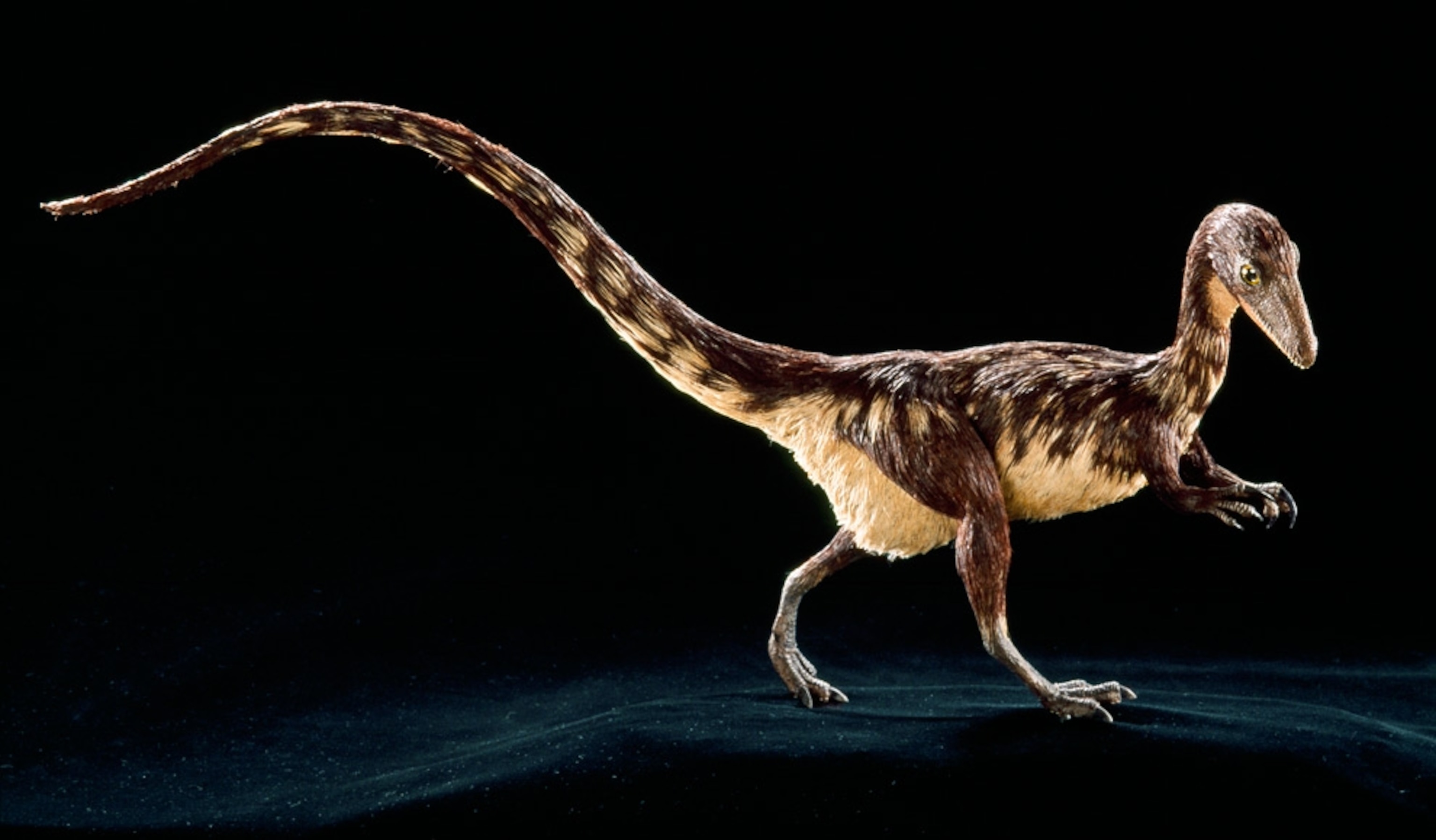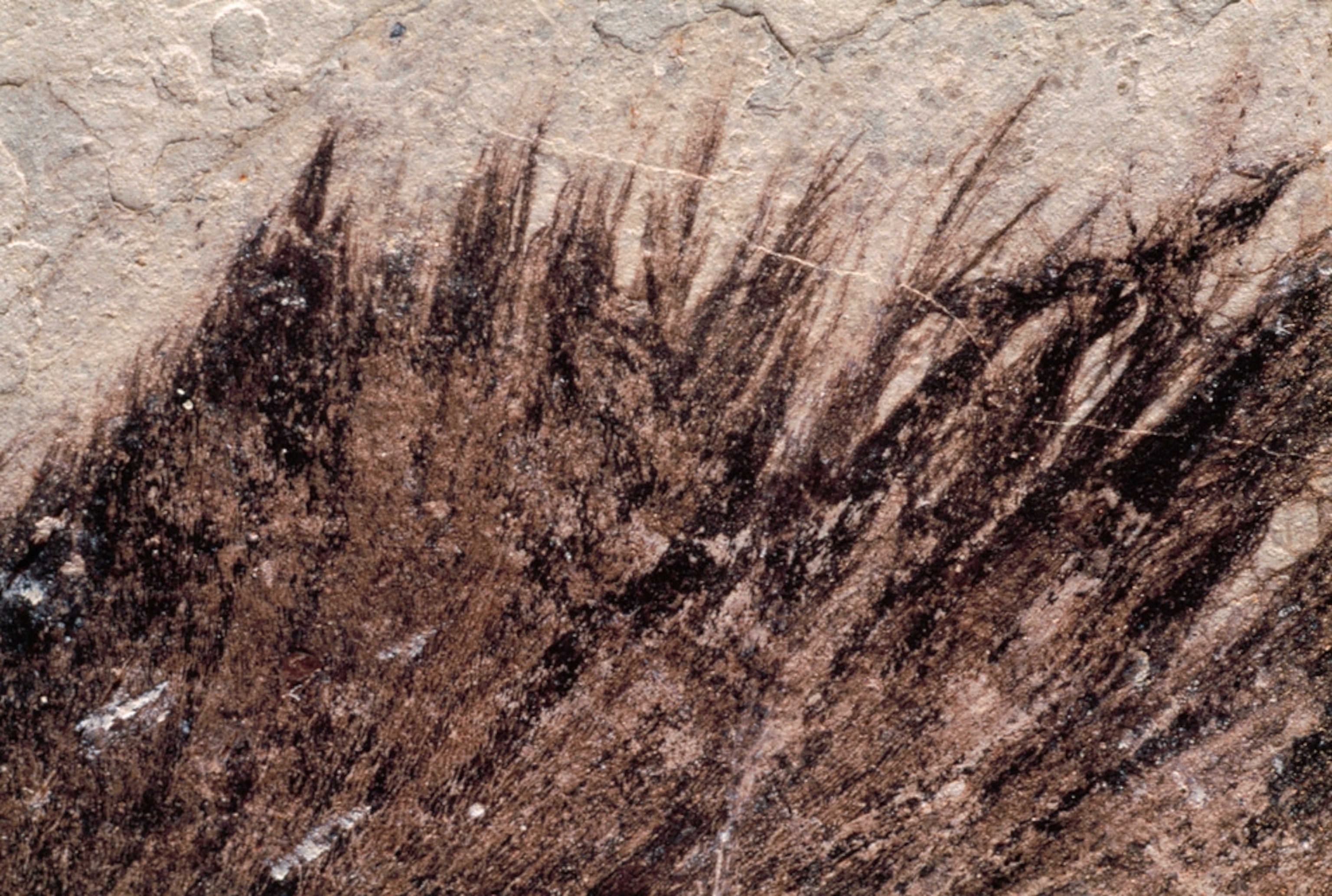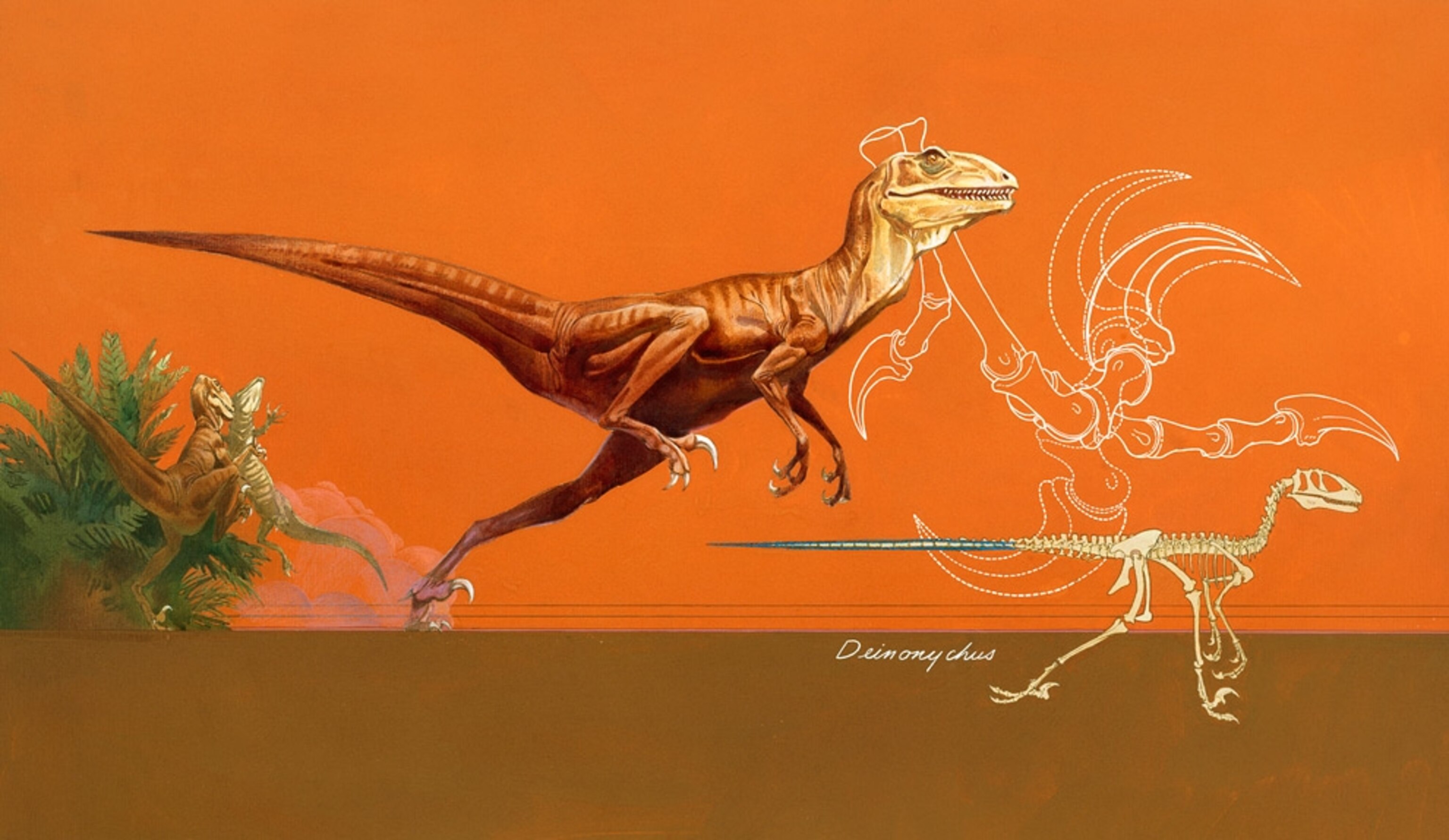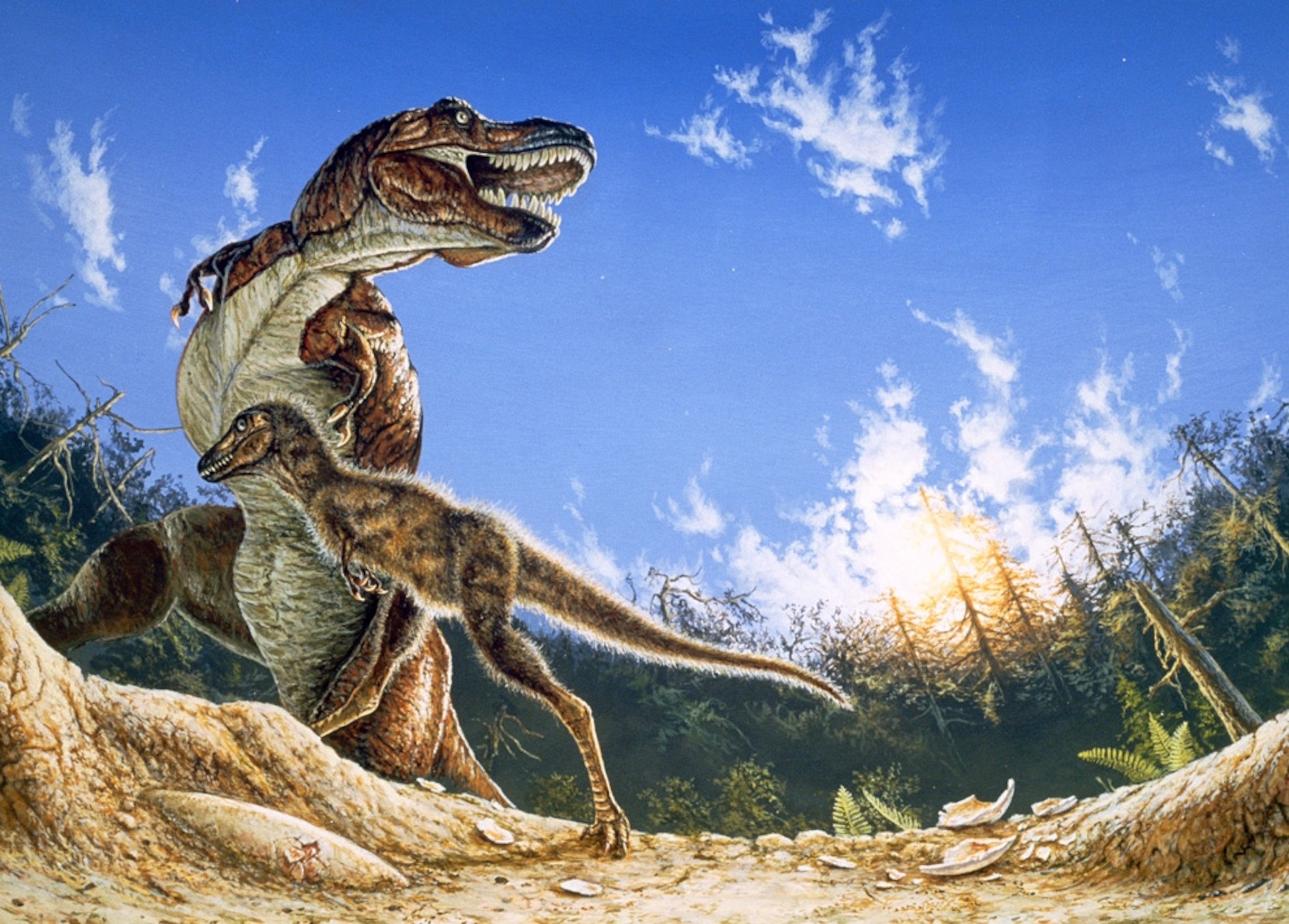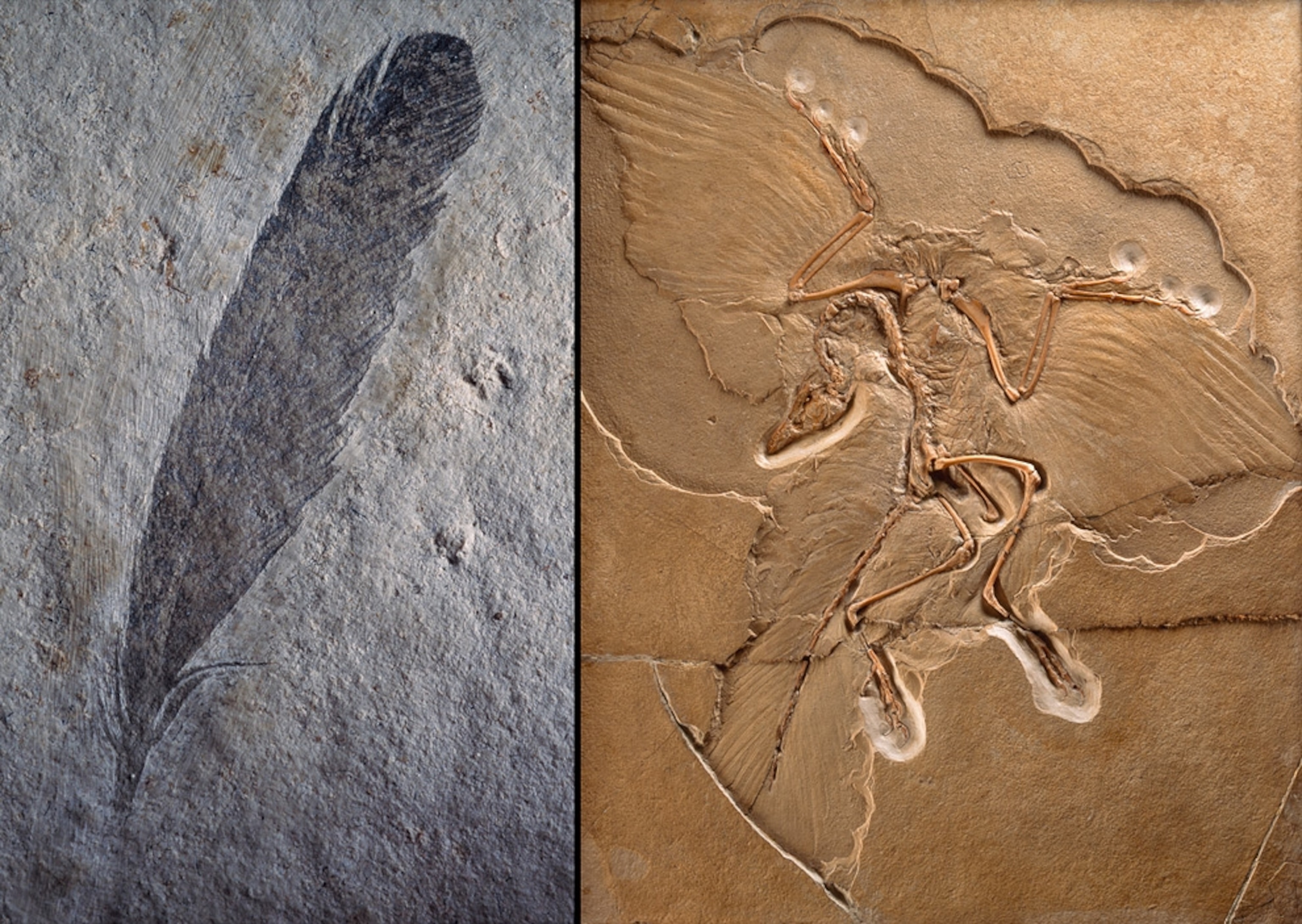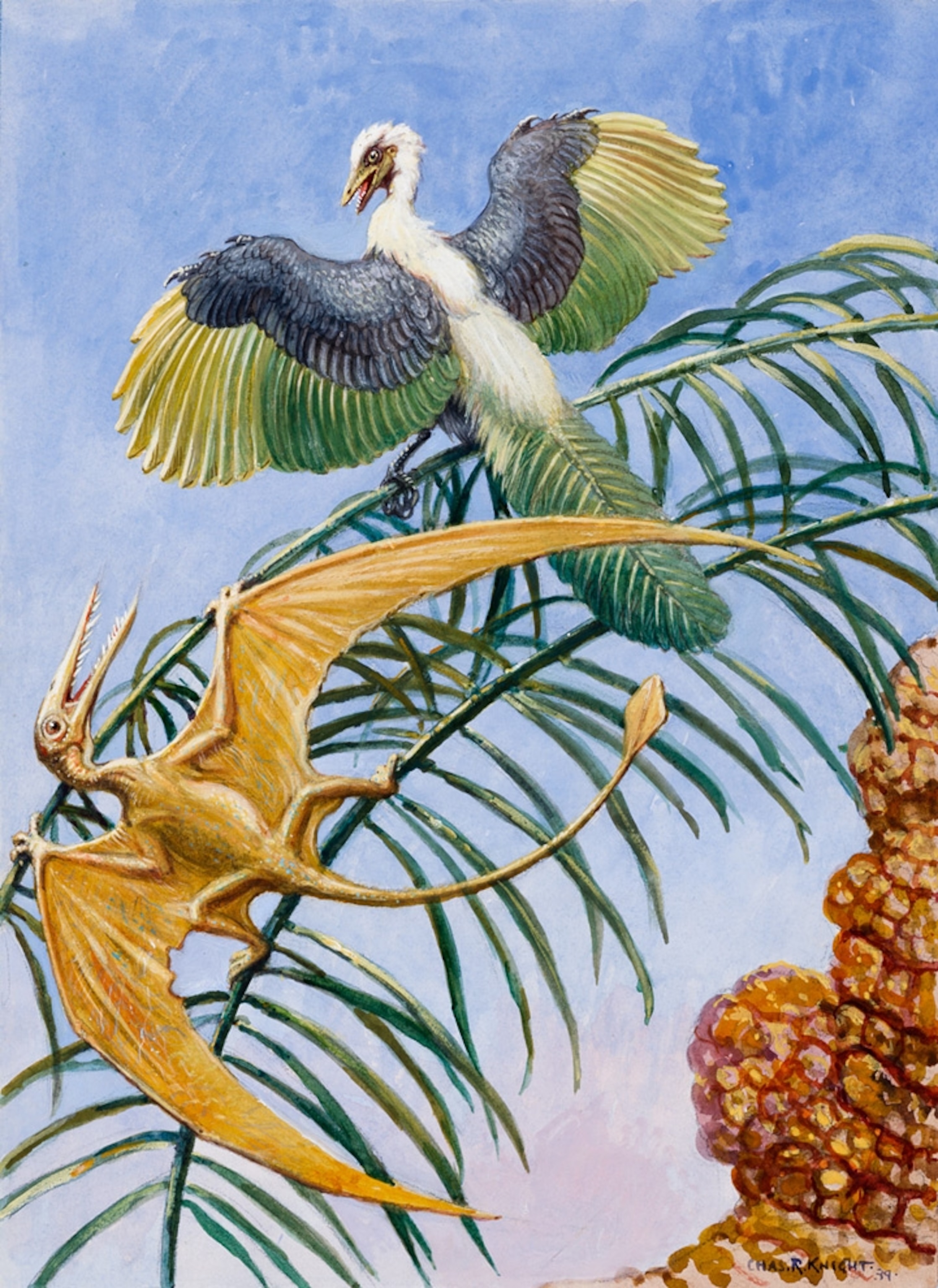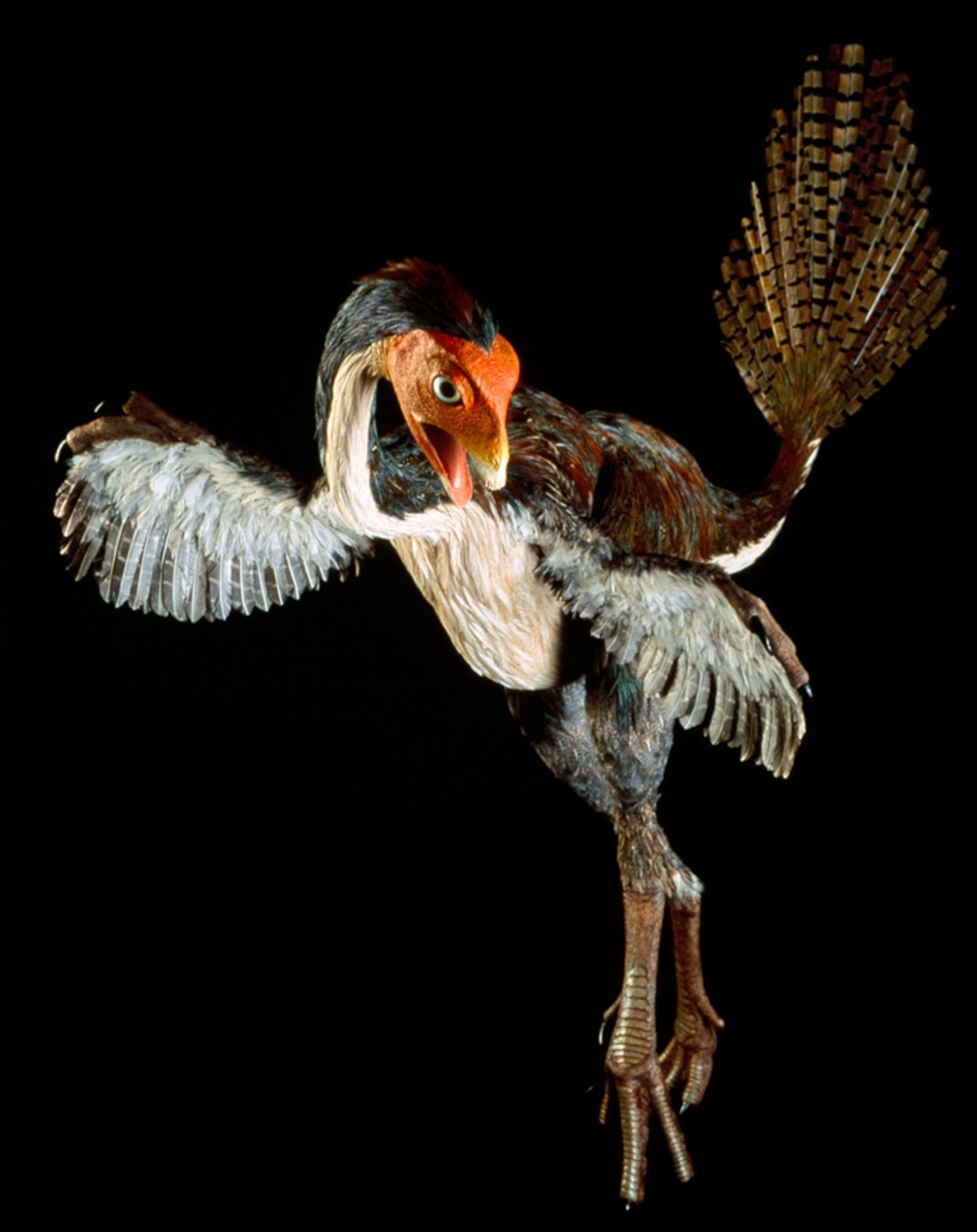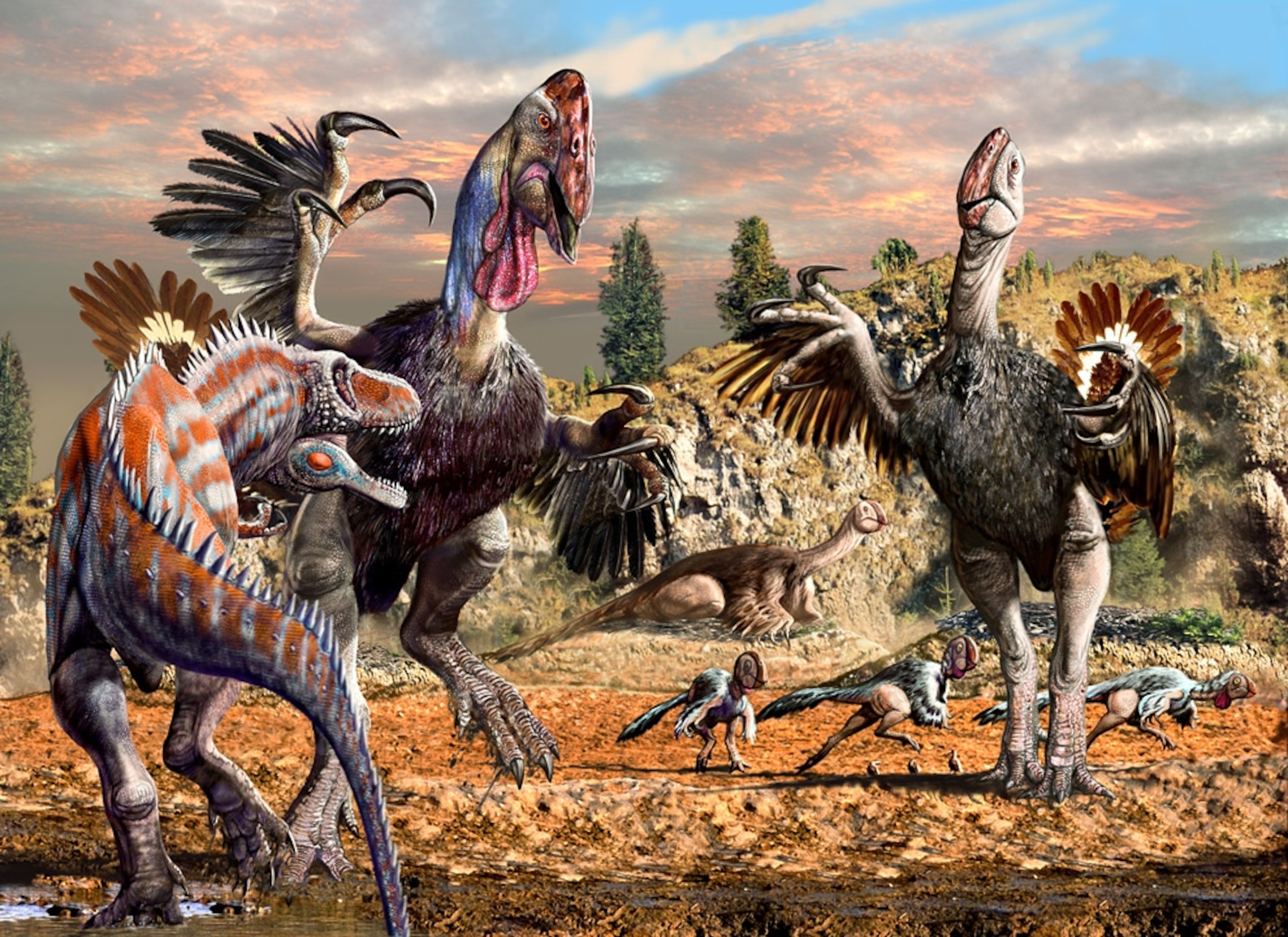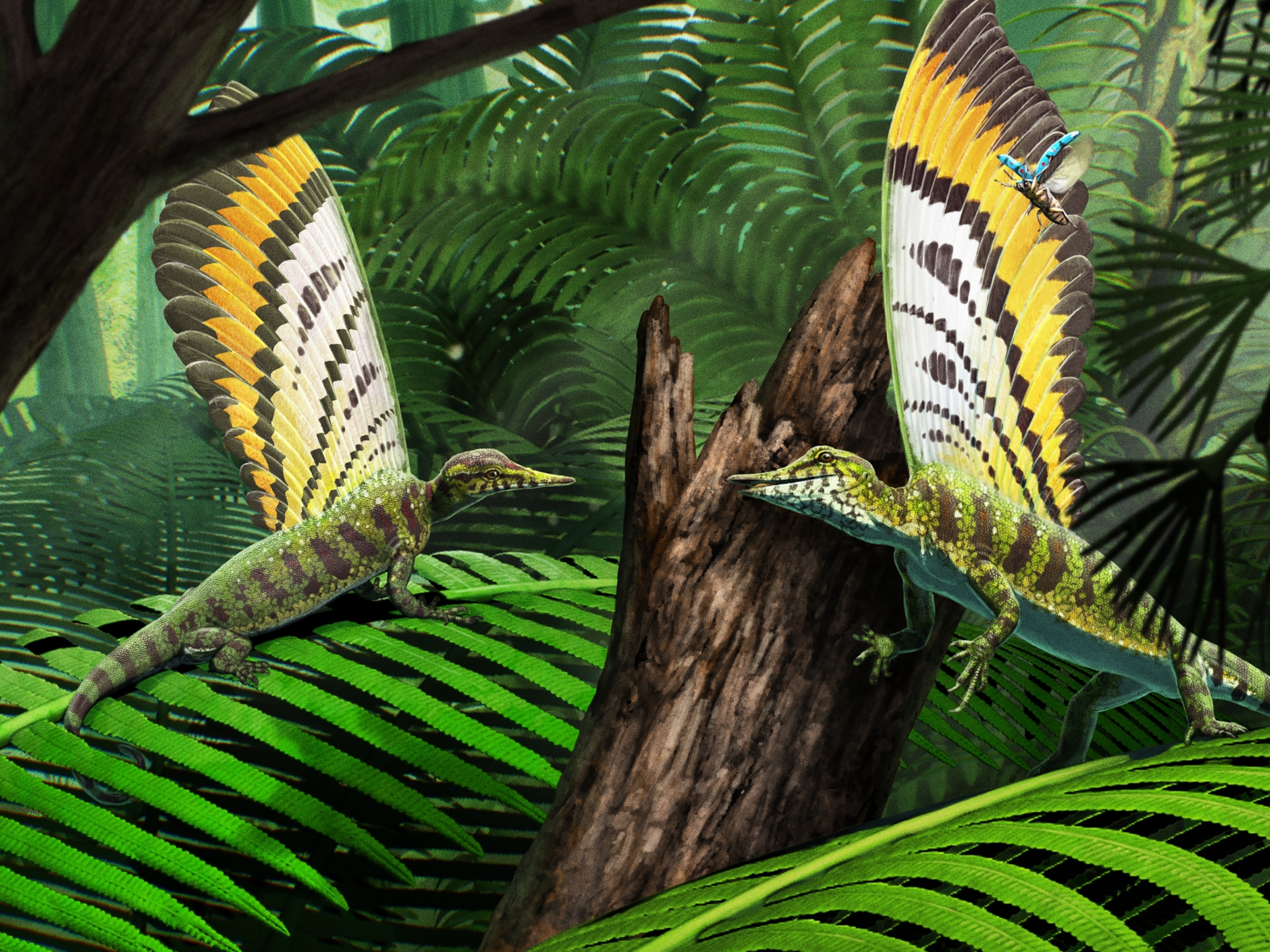In 1996 the scientific world was stunned to learn that a fossil dinosaur with feathers had been found in China. The animal, shown in a 1990s artist's reconstruction, was Sinosauropteryx, a turkey-size meat-eating dinosaur distantly related to Tyrannosaurus rex.
To many scientists, the surprise was not so much that a dinosaur had feathers, because many paleontologists agreed that dinosaurs were the ancestors of birds, but that feathers had been preserved in a dinosaur fossil for over 125 million years.
Since then, thousands of exquisitely preserved feathered dinosaurs and birds have come out of the 131- to 120-million-year-old Jehol Group sediments found in northeast China (prehistoric time line).
A report released January 27, 2010, describes how pigment-carrying structures called melanosomes are also preserved in the fossilized feathers from China. Since melanosomes are associated with pigment and color, researchers can now, for the first time, begin to provide an accurate view of the world of prehistoric color.
(See what scientists now think Sinosauropteryx really looked like.)–Chris Sloan, National Geographic magazine paleontology editor
